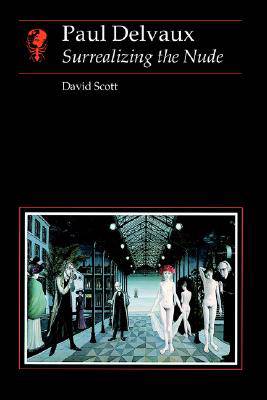
- Afhalen na 1 uur in een winkel met voorraad
- Gratis thuislevering in België vanaf € 30
- Ruim aanbod met 7 miljoen producten
- Afhalen na 1 uur in een winkel met voorraad
- Gratis thuislevering in België vanaf € 30
- Ruim aanbod met 7 miljoen producten
Zoeken
€ 25,95
+ 51 punten
Omschrijving
Although Paul Delvaux (born 1897) is an artist of international standing, his work is relatively little known in the Anglo-Saxon world. This book, the first on the artist written in English, places Delvaux's work in the tradition of European figurative painting, as well as in the more immediate context of twentieth-century Surrealism, exploring the relationship between them as they came together in the artist's works from the 1930s. David Scott identifies Delvaux's most characteristic contribution to twentieth-century art as that of problematizing academic history painting by surrealizing it. He concentrates on recurrent themes in Delvaux's art, notably his continuing, indeed unremitting, focus on the nude, and on the question of the legibility of the works, given the contradictory pictorial codes - academic and Surrealist - that Delvaux adopts in them.
Specificaties
Betrokkenen
- Auteur(s):
- Uitgeverij:
Inhoud
- Aantal bladzijden:
- 136
- Taal:
- Engels
- Reeks:
Eigenschappen
- Productcode (EAN):
- 9780948462399
- Verschijningsdatum:
- 1/06/1997
- Uitvoering:
- Paperback
- Formaat:
- Trade paperback (VS)
- Afmetingen:
- 157 mm x 234 mm
- Gewicht:
- 349 g

Alleen bij Standaard Boekhandel
+ 51 punten op je klantenkaart van Standaard Boekhandel
Beoordelingen
We publiceren alleen reviews die voldoen aan de voorwaarden voor reviews. Bekijk onze voorwaarden voor reviews.








